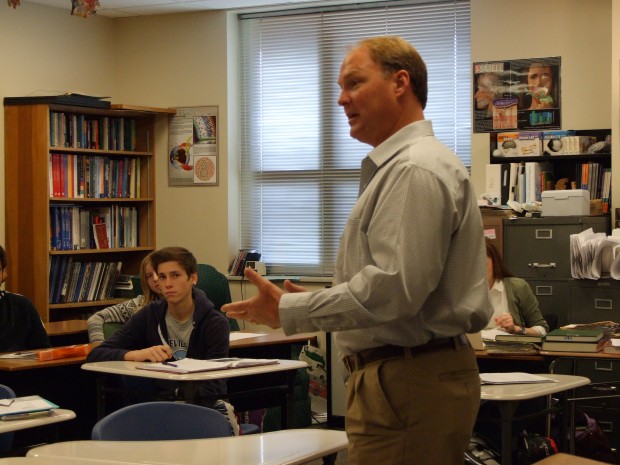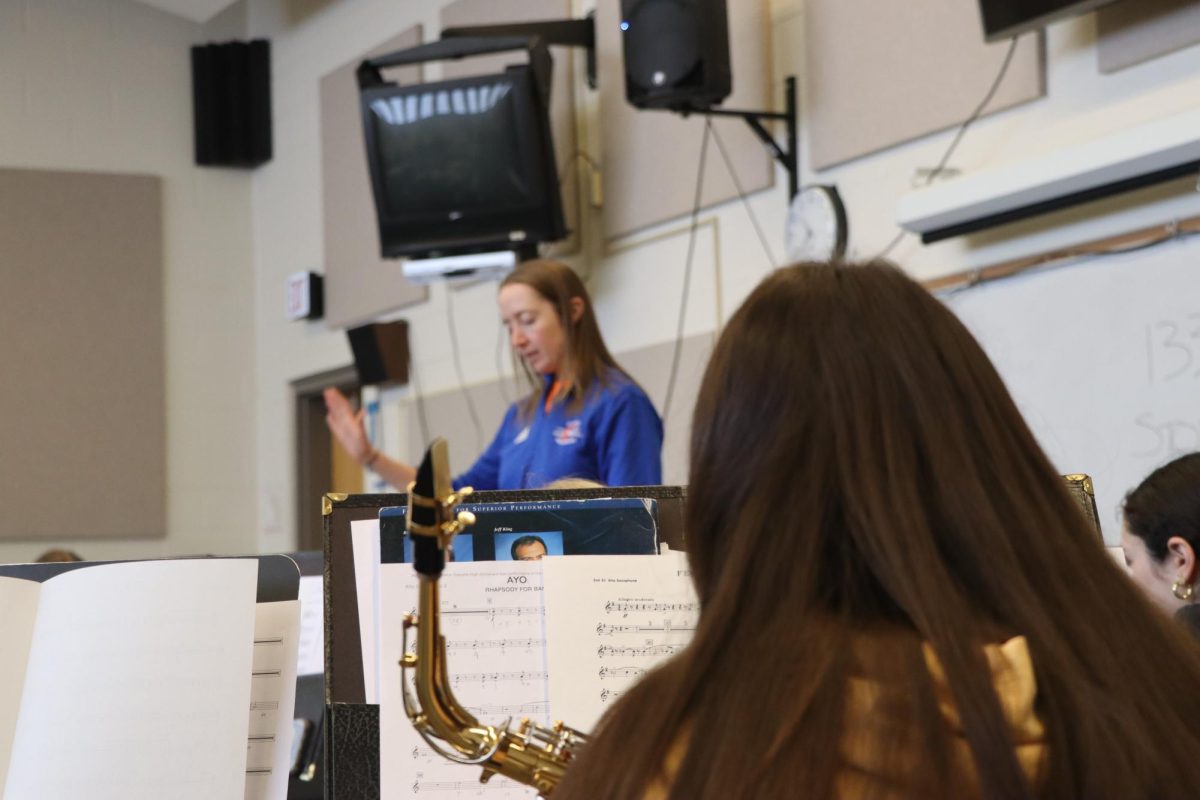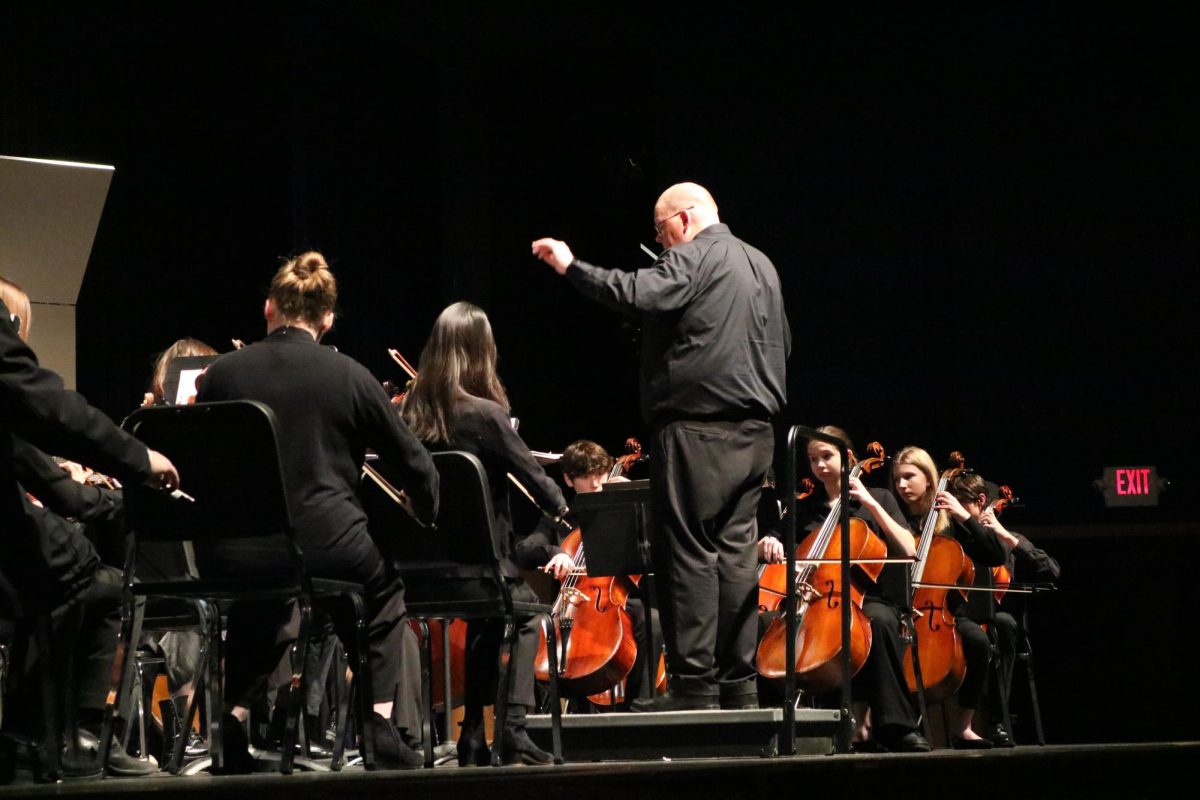
“When we first read something, think something, hear something or whatever,†Aiello said, “Neurons in our brain take that signal and try to communicate with other neurons to form connections. There are really really conflicting theories on this right now, but most of the theories will agree that it takes awhile for most things to sort of percolate in our brain…It’s called LTP which stands for Long Term Potentiation.
This means that the typical student reading their American History textbook reads an idea–it’s the first time they’ve ever heard or thought about that idea–it goes into a part of their brain called the hippocampus which is kind of like where stuff stays for awhile, until it either gets turned into a stored memory or it gets kind of lost. It decays away and eventually you can’t remember that you read that.
So that fact that you read in your American history textbook. After a couple of days, what’s going to happen to it if you don’t do anything more with it? It’s just going to decay over time.
It stuck around in the Hippocampus for a couple of days waiting for more stimulation to say ‘Ooh, he needs to use this again, let me think about it again and make a new connection with some other neurons so that I can actually use this over and over and over.’
However, as a student, hopefully you will read it once, if you’ve decided in your brain that it’s an important idea you’ll write it down. Now we’ve just forced that neuron that read it to send signals to other neurons that tell your hand to write and what to write. We’ve now actually made connections with three or four other neurons to start that process.
Later on, you come back and read that note. Again, you’ve activated a whole bunch of neurons to do the same thing.
You have to work with that same thought, that same fact, numerous times to make those connections between the neurons a habit. A learned behavior.
Unfortunately, for the typical student, what prevents them from doing that? Time. So what do students often do when they’re going to study for a test? … The real name in psychology, in cognitive psychology, is massed practice.
Basically, you’ve tried to practice the things that you’re going to need to know for this test in one big mass cram session. That leads to memory, short-term memorizing. It works better than doing nothing. Rather than just saying ‘Ahh I’m just going to go in and try my luck on the test and see what I can do.’ So if the choice is do nothing or cram, yes, I would encourage students to cram, it’s better than nothing.
The problem with that massed practice or cramming tends to be that students…have what’s often times called the tip of the tongue phenomenon…They read the question, whether it be a multiple choice, or a matching, or an essay, or they read the prompt, and the answer is in their short term memory, but they’re getting it all mixed up with all the other answers that are in their short term memory. They don’t really understand the concept.
So they’ve got these twenty different terms all just flying around in their head and they know it’s one of those. And for some reason, it might be the right reason, or it might be a completely wrong reason, they’re like ‘Aha! It’s the Panama Canal!’ Unfortunately, that was the right answer to the next question. The right answer for this question was the Philippine War. And they just, it was there, but it wasn’t really understood.
That’s what cramming leads to. Sometimes you get lucky and you get a bunch of them right, and sometimes you don’t get lucky and you get a bunch of them wrong.
The preferred method is called Distributed Practice. And this is what teachers, a lot of them, try to encourage kids to do. This is why teachers say ‘Okay, our test is two weeks from now.  I’m going to give you a syllabus that says read these ten pages tonight, and then tomorrow read the next ten pages, and then tomorrow read the next ten pages, and then tomorrow read the next ten pages. Distribute the new information out so that you have to use little bits, little bits, little bits, little bits.’
But, by itself, that’s no better, really, than cramming. What’s the key part that’s missing? What increases your chances of remembering it? Doing something with those thoughts again.
So read it tonight, and then maybe write down some notes, and then maybe answer a couple of questions, and then review it again the next night … That’s the idea of distributed practice.
The reality is, the schedules that most of our students keep force them into a ‘Do I do nothing, or do I cram?’
At some point you have to make a choice…Sometimes you just have to be willing to say, ‘You know, I can’t do it all.  And I’m okay with that. Not only am I okay with that, it actually helps me to appreciate the things that I do better.’â€






